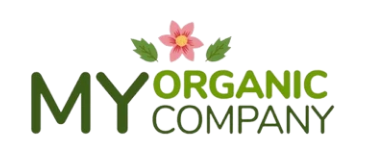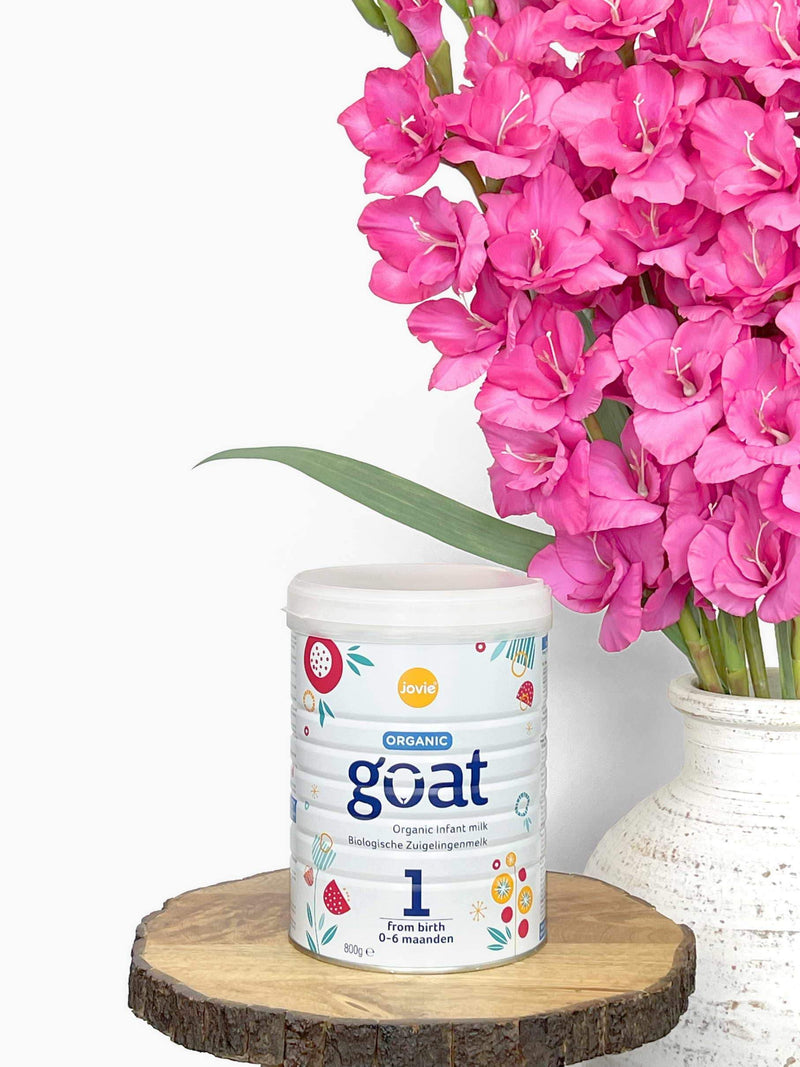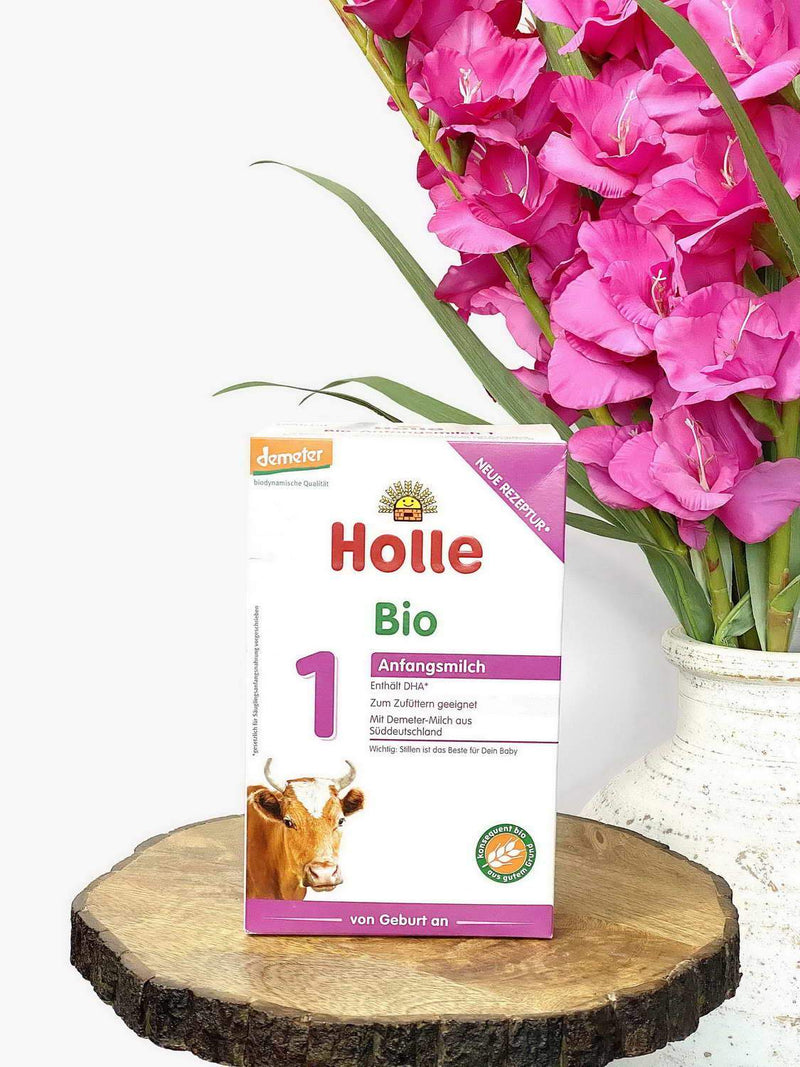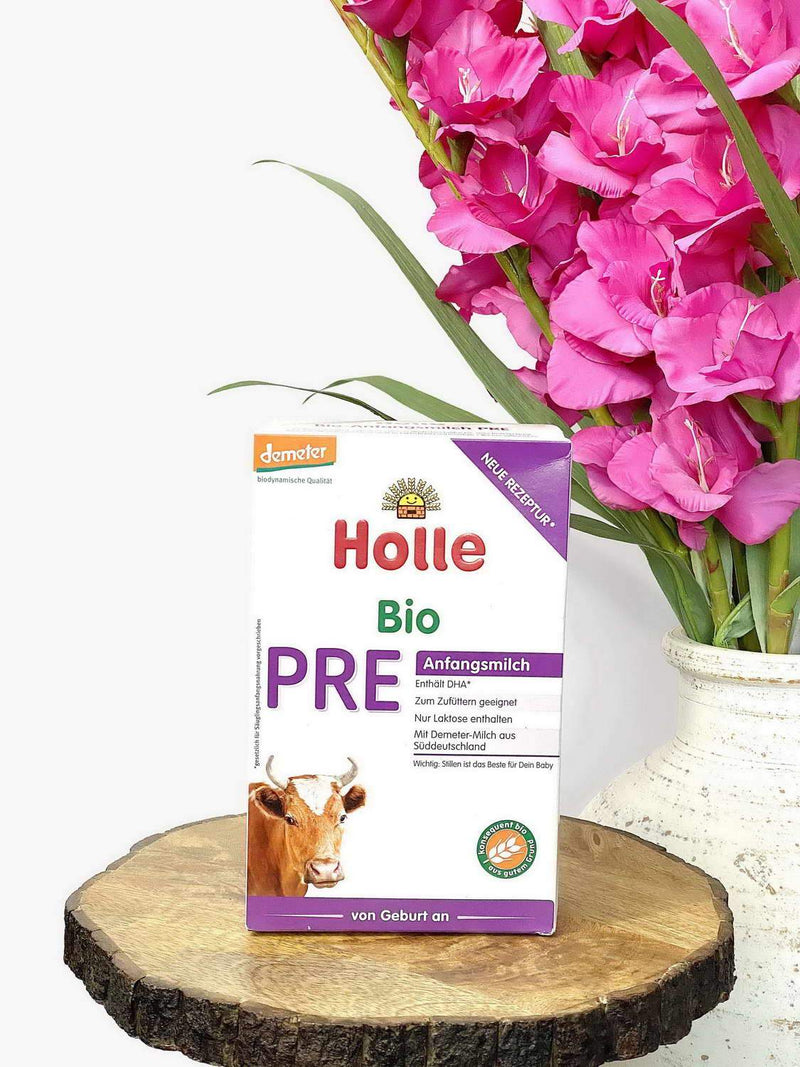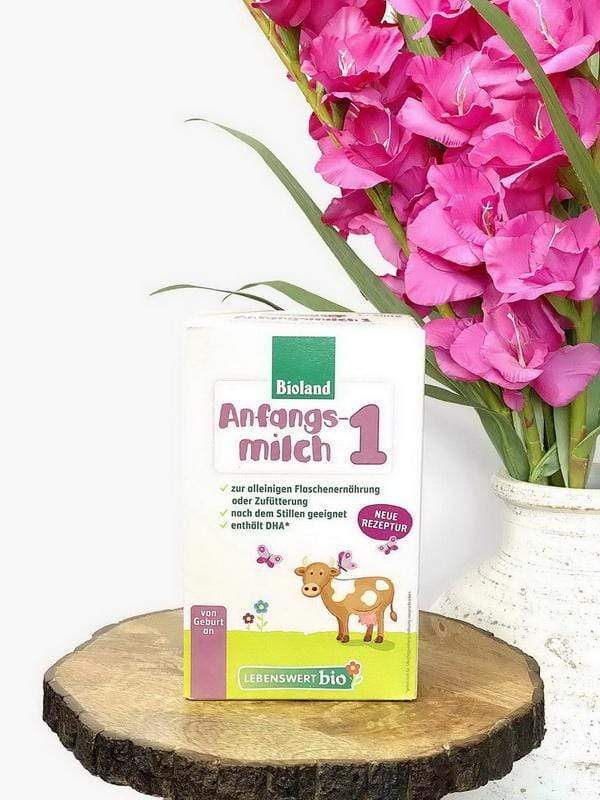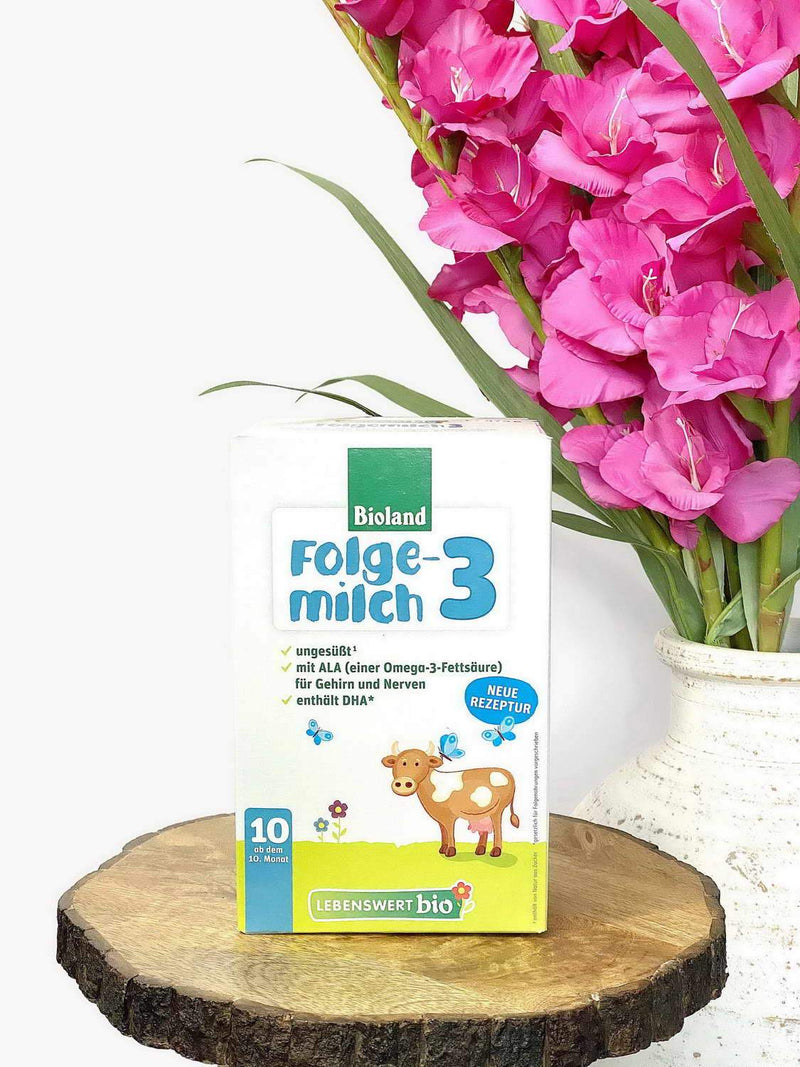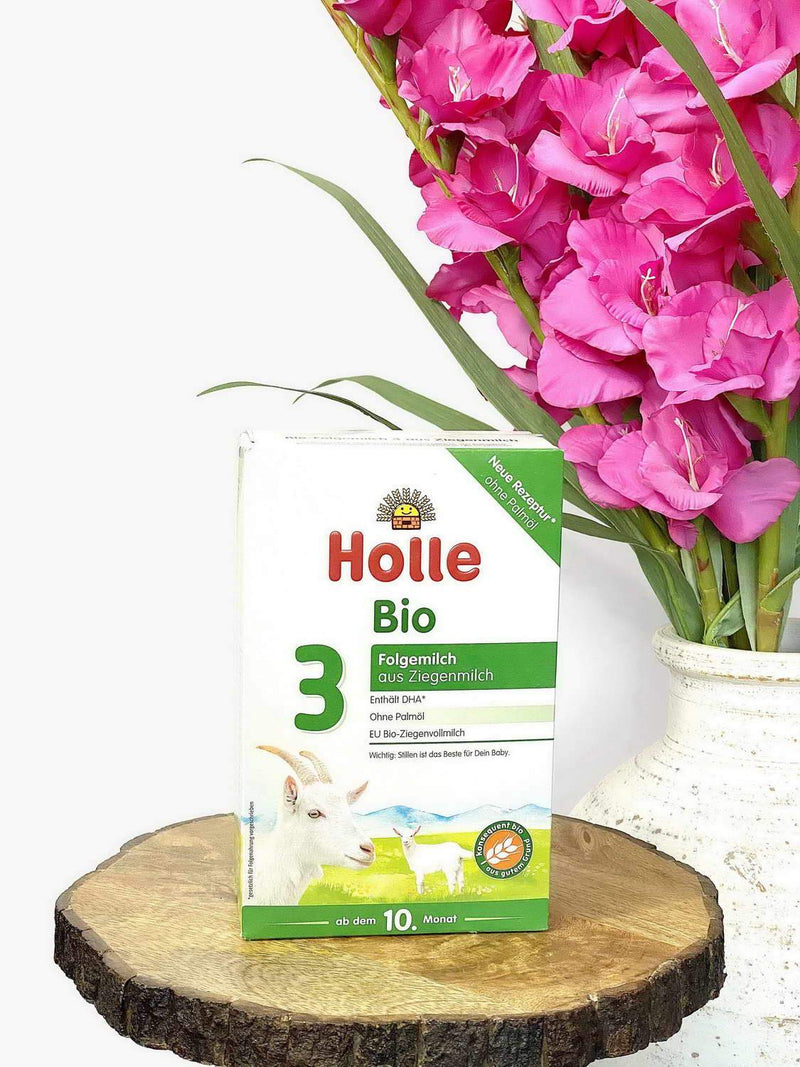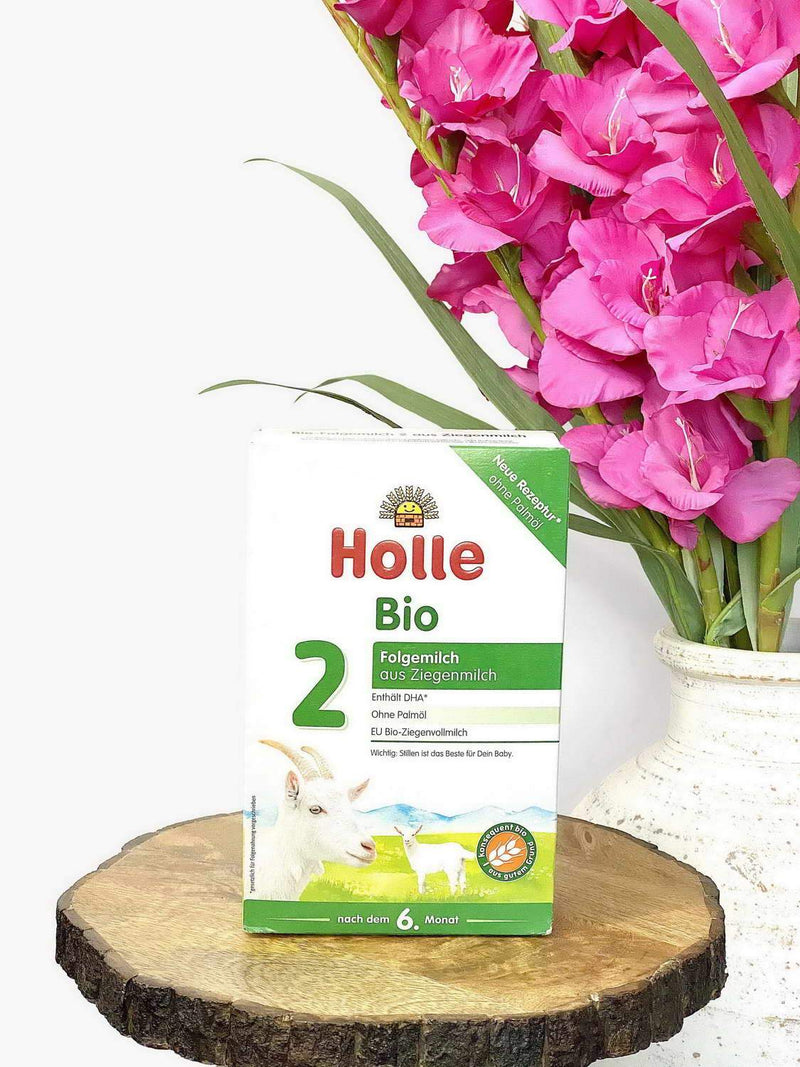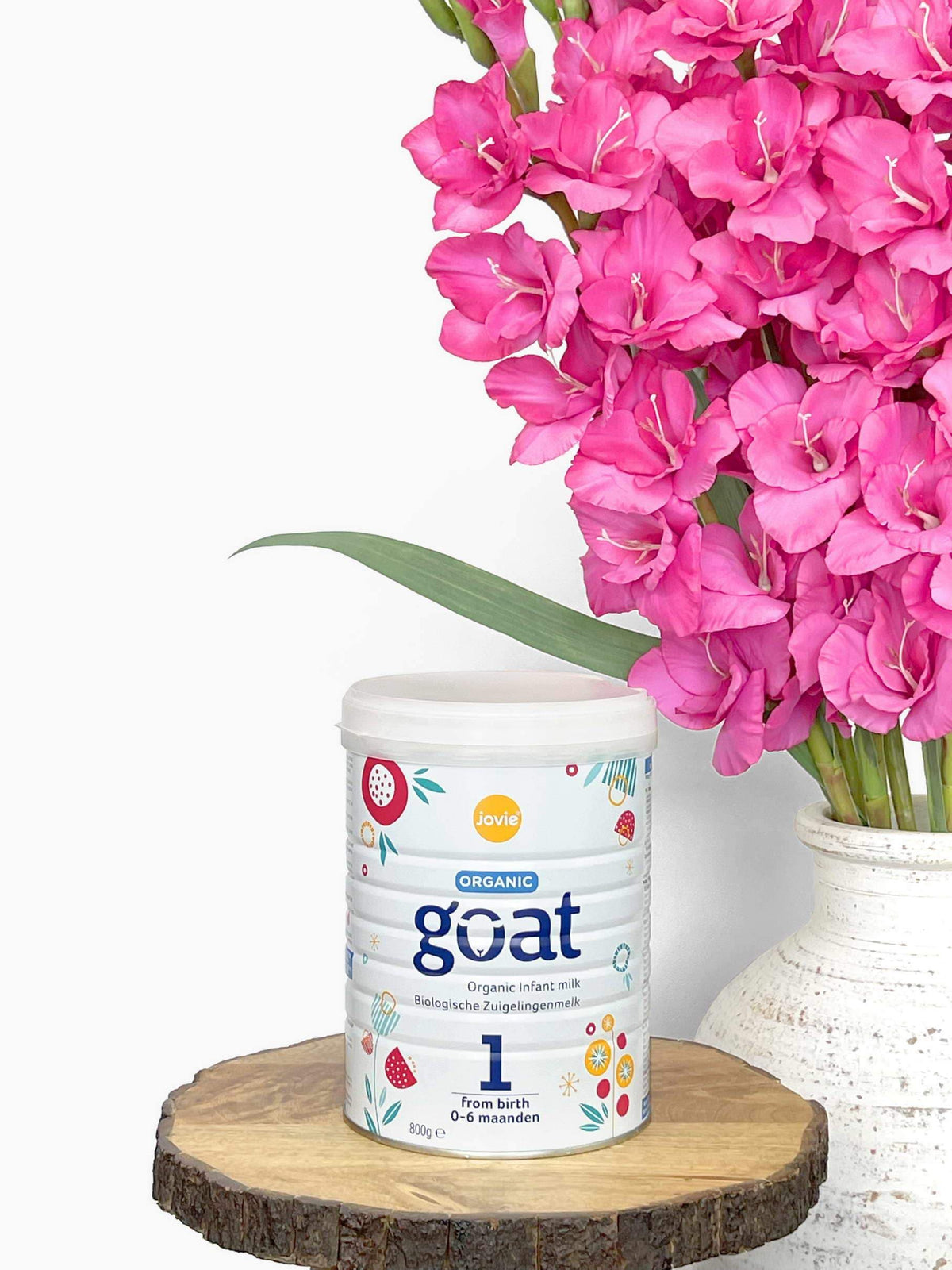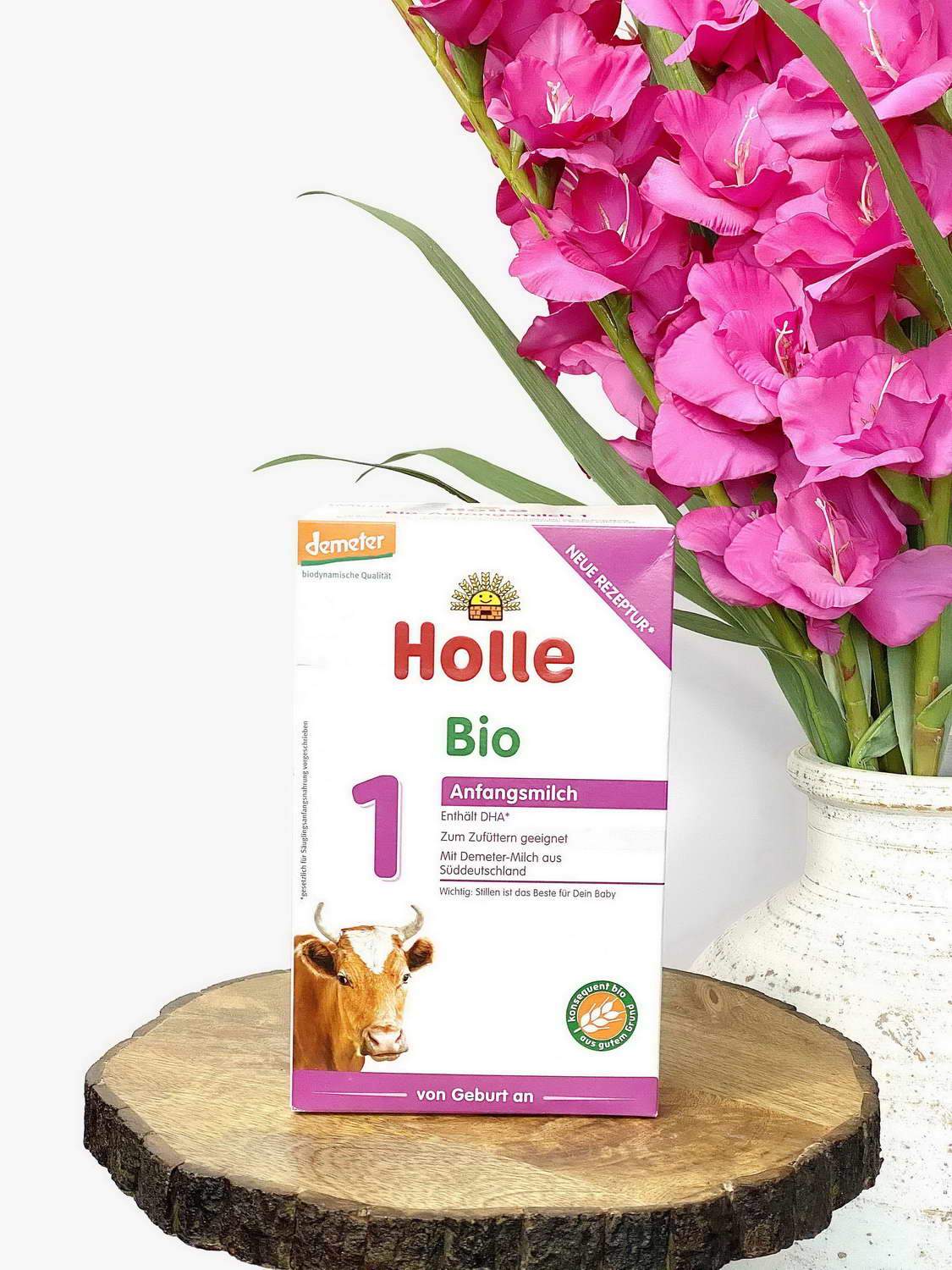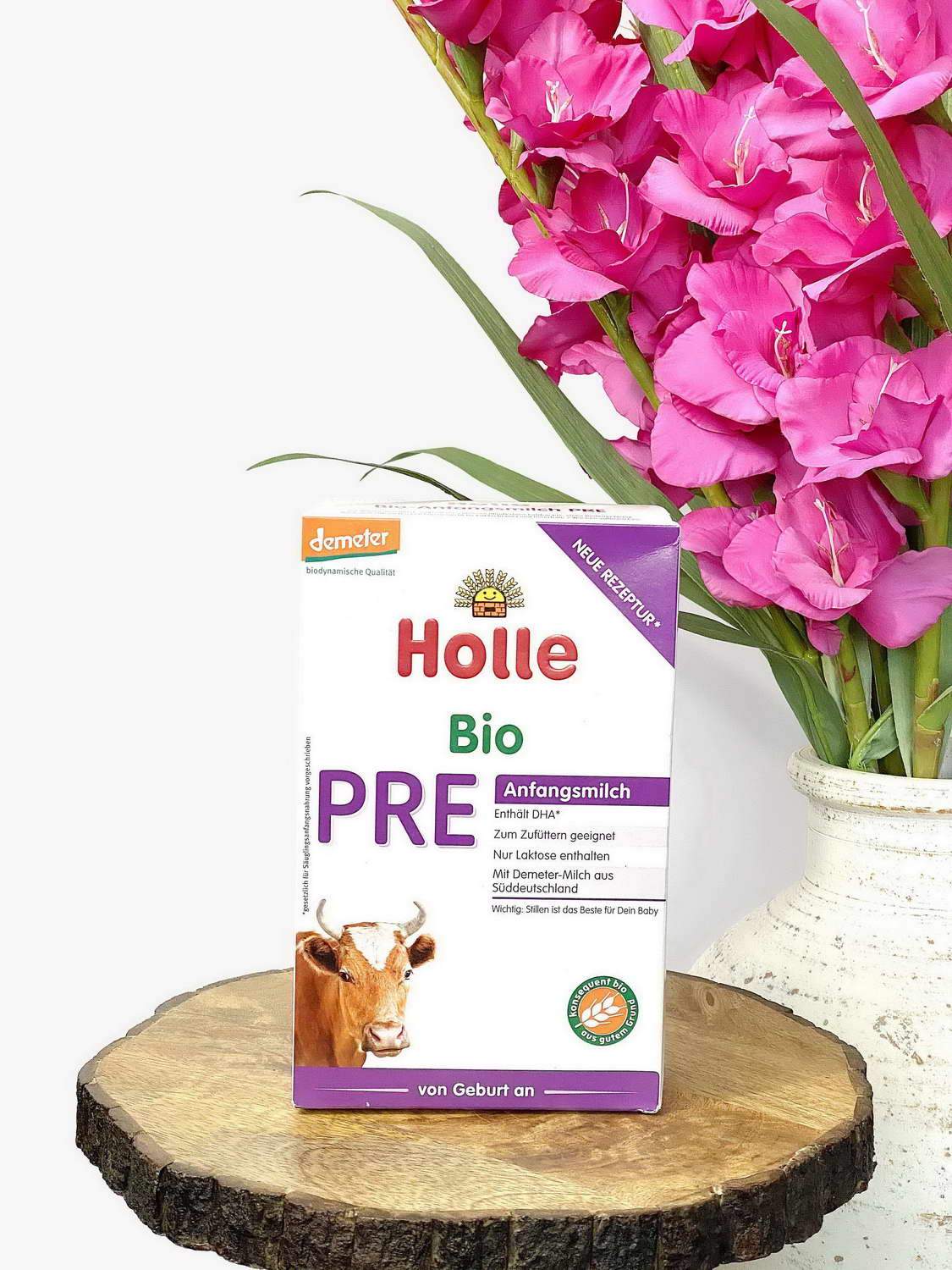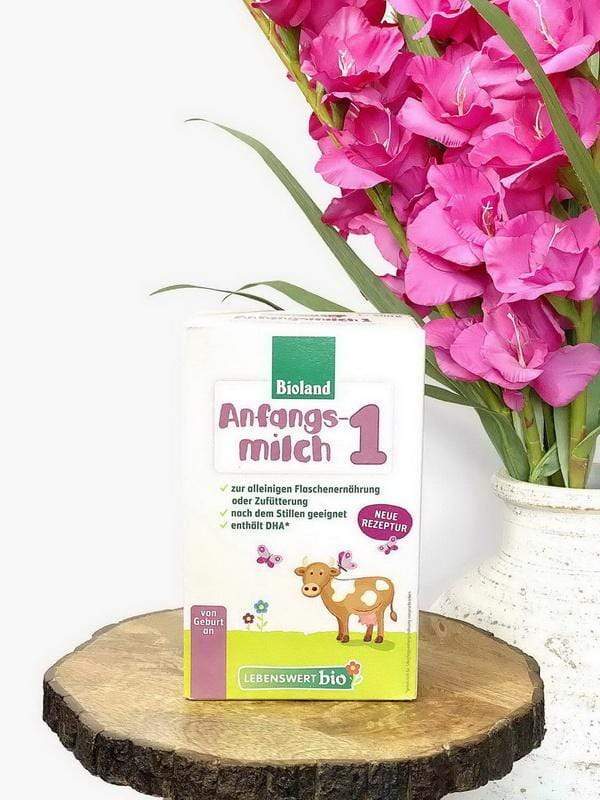Starting from the first day, the best way to feed your baby will be one of the most important decisions a family will make.
We know that breast milk is the perfect food for your baby. It contains just the right amount of nutrients and is also gentle on your baby's developing stomach, intestines, and other body systems.
What happens when parents or caregivers are not able to or choose not to breastfeed in the first years?
The answer to this question may seem straightforward - baby formula. However, this is far from simple.
Table of Contents
Differences between European Formula and US Industry
Pinpointing essential ingredients that mimic breastfeeding in the purest way possible while being made with manufacturing processes that are best for your baby and the environment can be a real challenge.
To bring clarity to this topic we would like to offer information on the differences between American, over the counter big brands, baby formulas and European baby formulas that are available for delivery.
Organic Farming
European baby formulas are produced using organic farming practices that have your infants' growth and development at the forefront.
Adhering to strict regulations and standards set by the European Commission (equivalent to the FDA in the US) ensures the use of only clean pure ingredients that are manufactured and produced in an ecological responsibility manner.
EU guidelines require that all European organic baby formula is free from pesticide residue, growth hormones, genetically modified organisms (GMOs), synthetic chemicals and preservatives, heavy metals and potentially toxic ingredients.
Careful checks and balances are put into place before an organic stamp is allowed to be placed on European baby formula.
These rules follow every step of the baby food making process from organic farming practices all the way to the final product.
We can safely say that US organic baby formulas are not upheld to the same standards as European baby formulas. Under FDA regulations, American baby formulas labeled as “Organic” does not always mean that every single ingredient is organic.
The US seems to have a divided look at organic nutrition for infants - organic formulas and grass-fed formulas. You cannot get both organic and grass-fed.
To get both you have to look to European baby formula companies where farming practices are 95% organic, sustainable, and animals graze in organically grown pastures.
Eco Friendly Products
Responsibility to produce the best nutrition extends to the farms used to source the organic ingredients.
European formulas again take the lead as many of the farms are biodynamic (holistic, ecological, and ethical approach to farming) carbon-neutral, and many of the companies go out of their way to acquire palm oil and coconut oil, used as healthy fats, from sustainable sources.
We have not found the equivalent to this in the big brand baby formula companies in the US.
FDA vs EU Regulations
The European Commission regulates requirements and exclusions of European baby formula, and the FDA is the overseeing agency for US baby formulas.
These two agencies operate in similar ways but their ideas of what is considered acceptable nutrition for an infant is far from similar.
From minor differences in ingredient amounts to major differences in nutritional content and adherence, the EU and FDA each have distinct ideals of what should and should not be included in your baby's nutrition.
Iron
Recently iron, pertaining to the amounts in baby formula, has been a hot topic in conversations, news, and blogs.
American and European formula governing bodies have quite different opinions on how much iron should go in baby formula.
The FDA has an exceptionally enormous range with this ingredient: US infant formulas have between 0.15 – 3.30 mg/100kcal iron. There is no specific industry standard, just general guidelines.
On the other hand, The European Commission requires iron amounts as recommended by age. European infant formulas (babies 0 – 6 months) must have between 0.3 – 1.3 mg/100kcal iron and European Follow-On formula (babies 6 – 12 months) must have between 0.6 – 1.7 mg/100kcal iron.
Please note that US formulas have iron concentrations well above the maximum allowable concentrations set by the EU for babies of that age.
Non-Lactose Sugars
Taking a quick look at American baby formulas you will notice that non lactose sugars are added more times than not, some more than a can of soda.
This ingredient is unnecessary and can cause health concerns now and in the future.
The good news is that European baby formulas with intact proteins (which is most formulas) cannot have any sucrose and those made from hydrolyzed proteins are allowed to have a little sucrose, but less than 20%.
DHA
Docosahexaenoic acid (DHA) is an important fatty acid found in human milk and is incredibly beneficial for babies’ brain, neural, and eye development.
Starting in 2020, the EU has required DHA to be added to all infant and all follow-on formulas to at least 20mg/100kcal. Sourcing from biodiverse vegetable oils and eco-friendly fish oils, European formula companies really do find every detail important.
The US does not require DHA to be added at all. There are some US formulas that do add this ingredient without strict regulation or sourcing guidelines; the amounts are questionable.
Soy
Sensitive babies need a gentle formula that is made with the best non allergenic ingredients.
European baby formula companies have again met the needs of infants with the most delicate systems by providing pure organic goat milk formulas that even babies that do not tolerate cow’s milk-based formulas can thrive on.
Organic European goat milk formulas are smaller, more digestible curds that contain nutrition that is closer to breast milk than other sensitive formulas available.
Each of the goat milk formulas available in Europe are balanced to meet the specific nutritional and digestive needs of little ones with food and environmental allergies while delivering anti-inflammatory and immune boosting properties much needed for the first year of life.
In the US, parents are hard pressed to find goat milk formulas for babies under a year and those that are available for babies over the age of 12 month have developmental hindering ingredients such as soy and/or non lactose sugars as an additive.
Additives
When parents look for nutrition to support growth and development, staying as close to nature as possible has to be at the top of the list.
Ingredients such as locust gum, guar gum, pectins, fructans (like insulin), and carrageenan are fillers and do not have any nutritive value, yet these extras are found in American baby formulas.
To best mimic breast milk, European baby formula regulations do not allow for these additives and fillers. The strict oversight for infant nutrition limits these unnecessary ingredients.
European Baby Formula Stages vs. American Baby Formula Ages
Finding the absolute best baby formula means finding the perfect fit for your little one nutritionally and developmentally.
In the US we see a one size fits all approach to the FDA regulating “Infant Formula.” Formula made for infants from birth – 12 months and toddler formula for little ones over 12 months.
On the other hand, The European Union recognizes that just like each baby is unique, so are their needs.
Stages in European organic baby formula that allows you to feed your child will meet their dietary needs as your child develops and grows, their dietary needs will change, and some infants' needs may change faster than others. At the very basics we know the nutritional needs of a newborn are much different than an infant that is a year old.
Stages are created in European baby formula for a specific balance of fats, proteins, vitamins, and carbohydrates that are best suited to each child’s current stage of development.
PRE-Stage
This level of organic baby formula is the gentlest, most commonly used for newborns in the first days and as a breastfeeding supplement. PRE stages have no starch, which helps make digestion easier.
There is no specific end age for this stage, but the recommendations are around three to six months of age.
Stage One
This is the most common stage for infants from birth to six months of age or used after PRE.
Stage one formula has the highest carbohydrate ratio which helps to meet the caloric needs of a growing infant. At this stage there are starch free options for newer systems.
Many families choose to use this stage for up to a year old as it is gentle enough to mimic breast milk and is perfect to complement breastfeeding or as standalone nutrition.
Stage Two
This stage is created to meet the needs of infants older than six months and who have begun to explore solid nutrition but may not be a part of their everyday menu.
Stage 2 formulas are similar to Stage 1 formulas but have more casein, with a whey to casein ratio of 20:80. Casein digests slower, keeping babies full for longer and are often creamier than Stage 1 formula.
This stage is recommended until the 10th month but can continue until your little one's first birthday.
Stage Three
Stage 3 is for older infants, generally, those that have reached their tenth month and are on the way to adding solid food daily.
As your little one becomes more active, families may notice their infant is not satiated after a feeding; this is the perfect time to consider switching to stage three.
Starch, nutrients, and energy contents are higher than with stage 2 formula, which means that it is also much more satiating and will help to meet the calorie requirements of growth that comes with an older infant.
Families use this formula until ready for the toddler milk stage.
Stage Four
After 12 month of age most infants will gain the majority of their nutritional needs from solid food. Stage 4 is intended to fill nutritional gaps that new eaters and those that may be weaning will have.
This stage is for little one’s over the age of one year old.
Some European baby formula brands do have stage 3 for over 12 months. Be sure to reach out to our European baby formula experts to find the right stage for your baby.
Closest to Breastmilk
Comparing American and European baby formulas, we have covered some of the most critical elements and differences that are found in the manufacturing, farming, and production of baby formulas.
Although, there is no formula that can replicate the innate goodness of breastmilk. It is very possible to get as close as possible by choosing the most natural ingredients available.
Only European baby formulas start with natural fats present in breast milk to provide your infant with the energy, carbohydrates, and protein they need for development followed by the most essential vitamins such as A, D, E, and K.
Whey
The protein ratio in European baby formulas are more similar to the proportions of whey and casein found in breast milk than the balance found in American baby formulas.
Prebiotics and Probiotics
The organic ingredients are specially added to replicate the immunity-boosting properties of breast milk.
Prebiotics such as galacto-oligosaccharides are remarkably similar to human milk oligosaccharides (HMOs), while probiotics like Lactobacillus are commonly found in breast milk, along with other types of lactic acid bacteria.
Unlike American over the counter formulas, many European formulas have naturally occurring HMOs as a natural occurring probiotic.
HMOs in breast milk play a large part in the development of a healthy gut microbiome, which in turn has been shown to reduce the risk of infection and allergy as well as support brain development.
Perhaps the closest to breast milk is goat milk baby formula which is only found in European baby formula and cannot be sourced in American big brand stores.
To compare, oligosaccharides (HMO) range from 60 to 350 mg/L in mature goat milk and from 200 to 650 mg/L in colostrum which is lower than in human milk (5–20 g/L) but higher than in other domesticated dairy animals including cow milk at 30–60 mg/L.
Organic Essential Nutrients
Starting from conception, all ingredients that are farmed, sourced and manufactured should leave no harmful substances in your baby's bottle.
Perhaps the number one priority in choosing a baby formula is to select an organic formula that eliminates pesticide residue, toxic processing agents, chemicals, and GMO ingredients.
European organic baby formulas go out of their way to avoid unhealthy and potentially harmful ingredients such as carrageenan, highly processed sweeteners like corn syrup, glucose syrup, and other non-lactose sugars.
On the opposite end of this is American baby formulas that allow these for quick energy, fillers, and cheap additives.
Differences That Matter
From farm to manufacturing, hands down European baby formula has the best nutrition to support your baby's digestive and developmental needs.
My Organic Company has European baby formulas to compliment your little ones' feeding journey. The way your family chooses to feed is important, whether bottle feeding or a combination breastfeeding and formula feeding, we have the perfect choice of baby formulas.
We carry pure, clean organic nutrition, only the best baby formula for your family.
